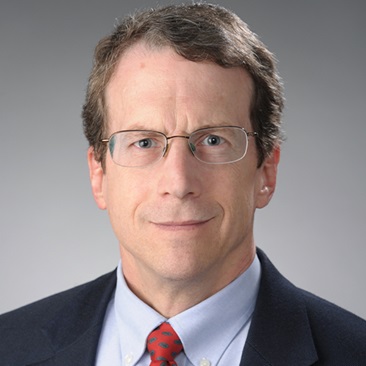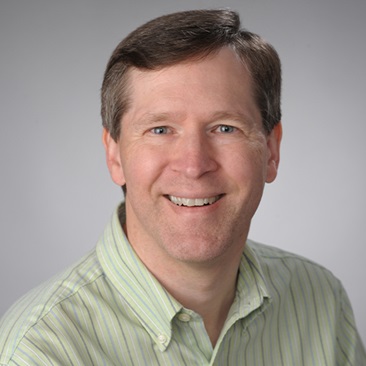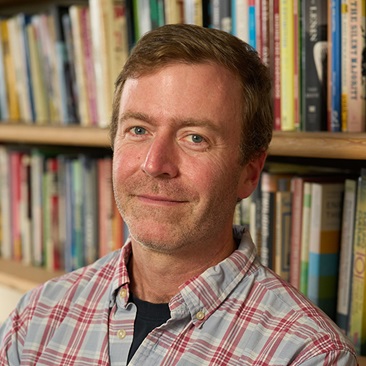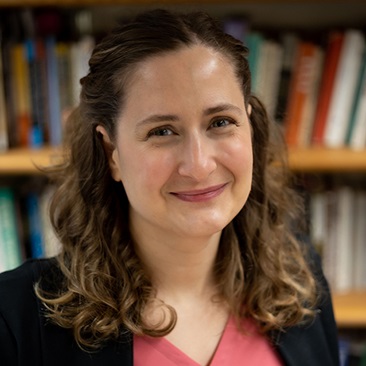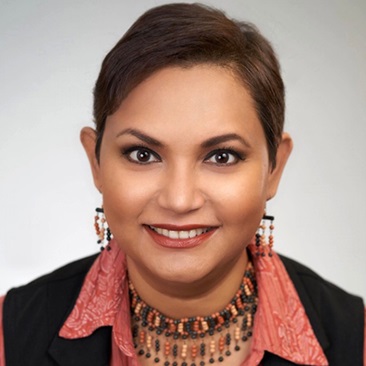Public Affairs and the Multifront Attack on Climate Change
June 25, 2019
In its breadth and interdisciplinary richness, the Maxwell School proves to be a fertile setting for research on one of today’s most complex and pressing issues. Researchers are working all the angles — policy, economics, societal adaptation, governance, citizenship, and more — in their contributions to saving this planet.
On March 15, thousands of children around the world walked out of classrooms to demand action on climate change. The protest was spearheaded by Swedish teenager Greta Thunberg, who had addressed the United Nations Climate Change Conference last December. It’s too early to tell if the protests will spark significant change, but the ability of youth to organize online and create an international movement bodes well, says Robert Wilson, associate professor of geography, who studies climate change history.
“Successful social movements, including most iterations of the environmental movement, have been coalitions of different groups of people who decided that politics as usual were not working,” he says.
Wilson is engaged in research to better understand the coalition that has formed in the United States to pressure government to take action on climate change. He’s part of a growing cohort of Maxwell School faculty members conducting research related to the environment, energy, and policy. Some are studying the particulars of government policy — industry regulation, economic incentives, etc. Some are exploring how the challenges of climate change strain assumptions citizens have about their governments. And everything in between. The diversity of climate change research at Maxwell reflects the enormity of the issue itself.
“Climate change is absolutely the most complicated environmental problem imaginable,” says W. Henry Lambright, professor of public administration and international affairs and political science. “It’s the biggest environmental problem, the biggest energy problem, the biggest political problem, and, I would argue, the biggest moral problem we face as a society.”

“These are complicated issues,” adds Peter Wilcoxen, Ajello Professor in Energy and Environmental Policy at Maxwell, “that can’t be fully understood within just one discipline. Trying to consider the technical, economic, political, and sociological aspects all at once is the only viable way to do anything about the problem.” Wilcoxen says Syracuse University and the Maxwell School are well-positioned to help.
In his words, Syracuse University’s size is in a “sweet spot” for meaningful collaboration to occur. “It’s big enough that there are people all around campus who are doing really interesting, cutting-edge research in their own discipline. But it’s small enough that you can actually know people across campus and come together to collaborate,” says Wilcoxen. Within the University, Maxwell has a strong interdisciplinary tradition, applicable to many aspects of climate change; and a history of collaboration around campus.
Wilcoxen is director of Maxwell’s Center for Environmental Policy and Administration (CEPA), a clearinghouse of sorts for interdisciplinary research related to the environment, energy, and policy. He says those efforts are flourishing, bolstered both by a nearly endless supply of important research questions and student interest and demand. “Students are very aware that they are threatened by what’s happening and that the brunt of it is going to impact them as the years go on,” he says. “They want to do something about it.”
Climate change work at Maxwell can be placed into four broad, interconnected categories: public policy, technology innovation, climate impacts, and resilience and adaptation.
Public Policy
At the heart of climate change policy is the idea that polluters should pay for the harm they create when emitting carbon dioxide. Charging polluters for their carbon emissions, or “pricing carbon,” would create incentives for reducing fuel use or switching to cleaner technologies. To date, 40 countries have implemented national carbon pricing policies. The United States is conspicuously absent from those efforts and the Trump administration has been clear that climate action is not on their agenda.
Wilcoxen has spent two decades analyzing prospective policies and has published widely on using environmental taxes as part of fiscal reform in the United States. As a nonresident senior fellow at the Brookings Institution, he collaborated with Australian economist Warwick McKibbin to build a global economic model of the international impact of environmental policies. Despite the stance of the current administration, he says, “sooner or later we’ll need to establish a price on carbon emissions. It’s not a matter of if. It’s really a matter of when and through what mechanism.”
The United States obtains almost 80 percent of its primary energy from fossil fuels. Reducing that will take a lot of investment. “Pricing carbon is a powerful way to bring that investment about, by making it profitable,” Wilcoxen says. “It provides incentives for renewable energy, for adopting more efficient appliances and buildings, for reducing low-valued uses of energy, and even for capturing and sequestering carbon dioxide from the atmosphere.”
David Popp, an expert in environmental policy and the economics of technological change, says a mix of policies works best but agrees that a carbon price yields the greatest economic benefit. “With a carbon price in place, businesses and consumers will have a bottom-line incentive to buy energy-efficient products, renovate their homes, or buy low-emissions vehicles,” says Popp, the Caroline Rapking Faculty Scholar in Public Administration and Policy and author of “A Blueprint for Going Green,” a set of recommendations for Canadian lawmakers to further that nation’s climate policy and push toward low greenhouse gas emissions.
“Putting a price on carbon is important because demand drives innovation,” he says. “As long as energy prices do not reflect the true costs of fossil fuels, consumers will prefer conventional products to higher-priced clean alternatives.” Maxwell’s unique interdisciplinary structure, however, supports research from a diverse set of perspectives. Matt Huber, associate professor of geography and author of Lifeblood: Oil, Freedom, and the Forces of Capital, believes that enacting climate policy depends on formulating policies that the American people can understand and communicating how policies will produce improvements to their daily lives. Concepts championed by energy-policy specialists, like a carbon tax or a cap-and-trade system, “are inscrutable to the average person,” he wrote in an article for American Prospect.
Huber advocates an “energy for all” plan (akin to Bernie Sanders’s “college for all” plan). Instead of being funded with a “Wall Street tax,” Huber suggests climate change activists campaign for a “fossil fuel industry tax,” used to finance cheap or free energy.
In the absence of national carbon pricing, the primary way America reduces transportation greenhouse gas emissions is through federal average fuel economy standards for gasoline and related greenhouse gas emissions standards. In 2012, these standards were made more ambitious. More recently, though, standards have been rolled back, gasoline price forecasts have dropped, vehicles are getting larger, and compliance is costlier.
In research published in the Journal of Policy Analysis and Management, Saba Siddiki, associate professor of public administration and international affairs, analyzed (with colleagues at Indiana University) the macroeconomic effects of gas-mileage standards. Short-term effects will be negative, “but the long-term effects will be positive,” she says.
In another project, funded by the National Science Foundation, Siddiki and her colleagues examined the effectiveness of state policies that encourage consumers to purchase electric vehicles. As of 2016, 28 states offer some form of incentive for electric vehicles, such as purchaser tax credits or support for charging infrastructure.
“We find all three of these policies related to an increase in electric vehicle uptake,” says Siddiki. However, she notes that an important factor in determining that uptake is the extent of the charging infrastructure present in a community; the policies have more impact in communities with more charging stations.
Siddiki says policies at the local and state level can help contribute to climate change-related policy goals, as they “influence consumers to make choices that are more environmentally sound, by making it more or less convenient to change their behavior . . . or make it less costly to adopt technologies,” she says.
That holds true across sectors. Environmental sociologist Rebecca Schewe, an O’Hanley Faculty Scholar, says farm policies and subsidies impact farmer decision making, which in turn has environmental repercussions. According to Schewe, associate professor of sociology, 70 percent of nitrous-oxide emissions (a potent greenhouse gas) in the United States come from agriculture, almost exclusively from nitrogen fertilizer.
“One of the most significant ways that we can reduce the climate impact of agriculture in the U.S. is by decreasing fertilizer use or making fertilizer use more efficient,” she says. But subsidy policies and farm insurance systems incentivize farmers to over-apply fertilizer. Unlike the weather, for example, fertilizer inputs are “one of the few things that farmers can control,” Schewe says, “so farmers tend to try to offset those other risks through increasing fertilizer application.” In addition, many corn farmers operate under “tournament contracts” that rank their production against other growers. They over-fertilize in hopes of topping those rankings. “No one is paying producers to incentivize conservation behaviors,” Schewe concludes.
Technology Innovation
To develop more sustainable alternatives to products and processes that pollute, one key, according to Maxwell experts, is developing policies that spur such innovation. “There is a growing body of evidence that the incentives offered by prices and environmental regulations have a strong influence on both the creation and adoption of new technologies,” says Popp, who recently completed a paper analyzing 10 years of research on environmental economics, with results linking environmental policy and innovation.
He points to innovations such as catalytic converters for automobiles, which led to dramatic reductions in air pollution in the developed world; and wind and solar power, now cost-competitive with fossil fuel sources while reducing emissions in the electric-power sector.
Popp himself has done extensive research on the correlation between policy and innovation, using patent data as a means to quantify technological change. Over and over, he’s found evidence that both energy prices and public policy play a significant role in spurring patent applications.
“Entrepreneurs want to develop products for growing markets,” says Popp, co-editor of two journals, the Journal of the Association of Environmental and Resource Economists and Environmental and Resource Economics. “Higher energy prices and incentives create demand for green energy technologies throughout the economy.”
Carmen Carrión-Flores, research assistant professor of economics, also uses patent data to study green innovation. One project studied 127 manufacturing industries over a 15-year period, using patent counts and pollutant emission levels to measure environmental innovation. She found that when industry anticipates tight pollution targets, that spurs new R&D, which prompts pollution reduction. “Innovation can lower firms’ costs of meeting tighter government or consumer or NGO pollution targets,” she says, “spurring successful demands for improved environmental performance.”
Another project studied the impact of voluntary pollution reduction (VPR) programs, now an integral part of U.S. environmental policy. There are more than 60 partnership programs sponsored by the Environmental Protection Agency, including the well-known EnergyStar program, which incentivizes home builders to “build green”; and AgSTAR, which promotes biogas recovery systems to curb methane emissions at animal feedlots. Carrión-Flores found that participation in VPR programs was associated with a reduction in the number of successful environmental patent applications. She speculates that VPR programs induce firms to move away from research, and toward monitoring and compliance activities — which, she says, “yield short-term benefits in reduced emissions,” but “a negative relationship with longer-term environmental innovation.”
Maxwell faculty don’t only study the impacts of policy on innovation. They also help to develop new technologies. Wilcoxen, along with SU physics professor Peter Saulson, directs the undergraduate, interdisciplinary Energy and its Impacts major, in which seniors design an energy project and “pitch it” to a decision maker. Last year, Prabhjot Kaur ’18 (who also majored in international relations) designed a storage system for renewable energy.
Wilcoxen is working with the University to implement a version of the project on South Campus. It would create a campus “testbed” to address the issue of energy storage at the grid level.
“One of the big challenges with renewable energy is that it’s intermittent; you only get it when the sun is shining or the wind is blowing and not necessarily when you need energy,” says Wilcoxen, whose recent research focuses on the electrical grid and renewable energy. The testbed project would combine a new, on-campus solar array with a large, commercially available battery. Students will research mechanisms to control the flow of power from the solar array to the battery and to the grid, and vice versa. Most solar installations simply generate electricity passively, but a renewable energy testbed would give students practical experience in how the grid will absorb renewable sources.
According to Wilcoxen, the testbed project is just one example of how research on environment and sustainability serves student interests and pedagogy. “This would be an interdisciplinary project, drawing students and faculty from many departments” — in Maxwell and SU’s College of Engineering and Computer Science chiefly.
Such projects signal “a clear commitment to renewable energy” on behalf of the University, which likely attracts and engages a whole generation of students. “We have a lot of students interested in renewable energy,” Wilcoxen says.
Climate Impacts
As a firefighter with the U.S. Forest Service in the early 1980s, Jacob Bendix worked on the Emerald Lake Fire, at the time the largest wildfire in the history of the state of Colorado. “That was about 10,000 acres,” he says. “It barely shows up on lists of largest fires in the state anymore.”
By contrast, the Hayman Fire in Colorado in 2002 burned more than 138,000 acres. “Forty years ago, any fire that reached 50,000 acres was considered huge. Now we have fires that get that big overnight,” says Bendix, now a professor of geography at Maxwell.
Nowhere are the consequences of climate change more evident than in increasingly common episodes of extreme weather and its aftermath — hurricanes, flooding, drought, wildfire, and temperature extremes. Bendix, who studies and teaches about the impact of climate change on wildfire, says that the size and rate of spread of today’s fires is directly related to climate. In addition to loss of property and life, Bendix says these fires can have long-term socio-economic consequences. In California, for example, where housing is already in high demand, frequent large wildfires have impacted residential areas with lost housing stock.
“Because there is such demand, a lot of medium- and low-income housing is likely to be replaced by more expensive housing,” says Bendix. “Ultimately, it makes a crunch for low-income folks simply trying to find an affordable place to live.” It also becomes more difficult and costly to insure homes. “There are areas in several states out west where, because of wildfire risk, it is difficult for homeowners to insure their homes, and where the cost of that insurance is rising dramatically,” he says.
There are also serious environmental concerns resulting from wildfires: air pollution and sometimes water pollution as well. Bendix is aware of at least two instances where local districts have ramped up treatment of drinking water “because of post-fire runoff into the reservoirs they were drawing their water supply from.”
According to Lambright, there’s no better scientific evidence for the impact of climate change than that provided by NASA’s Earth Observing System, which monitors and measures changing environmental factors, such as melting ice caps and sea level rise. “They give you a global view. You can see what’s happening to Antarctica, Greenland, and the North Pole and the melting of ice caps,” he says.
Lambright, who was the founding director of CEPA, has studied NASA’s connection to the environment since the late 1980s, when the ozone hole opened up. “It was the first big global environmental problem and required global observations to get a handle on it,” says Lambright, whose research was published in NASA and the Environment: The Case of Ozone Depletion. He wants to take the same approach to climate change, using NASA data to make his case, beginning with sea levels.
“It took years for the satellites to come up with the information we have today, but it is now conclusive that sea level rise is happening, and happening faster than we thought,” he says.
The consequences of those environmental impacts are evident both far and near. In China, for example, melting glaciers at the source of the Yangtze River have increased water discharges, causing flooding in summers that threatens main roads and local residents, says geography professor Peng Gao, who studies climate change on the Qinghai-Tibet Plateau.
The Yellow River suffers an opposite impact. Its source is mainly comprised of grasslands, where climate change raises temperatures, which increases evaporation. “As a result,” says Gao, “the Yellow River has experienced reduced water discharges, an impact further complicated by increased population.”
In the American Midwest, flood damage in 2019 is likely to total more than $1 billion. The unprecedented flood season was triggered by snowmelt from the “bomb cyclone,” creating rampaging rivers, exacerbated by spring rainstorms. According to Sarah Pralle, associate professor of political science, the losses will be worst for homeowners and farmers because many lack flood insurance. Many residents in states like Nebraska were unaware they needed flood insurance because they did not fall within flood zones designated by the Federal Emergency Management Agency.
Those maps, Pralle says, are designed to establish insurance rates, while also communicating flood risks. She is researching the politics of flood mapping, and how local communities have responded to FEMA’s recent flood-remapping project. “Because the flood mapping program is the cornerstone of the National Flood Insurance Program, local conversations often revolve around the costs of flood insurance, rather than the risk of flooding,” she says.
Resilience and Adaptation
In her study of flood mapping, Pralle is also among researchers considering how communities and governments are adapting to climate change’s seemingly inexorable impacts. “Climate change adaptation raises important questions about who wins and loses from that process. Who gets to decide what we save and what we don’t save?” she asks.
When FEMA updates flood maps, the community response can be surprising. Elected officials sometimes resist, because they fear the impact on flood insurance premiums. “They may worry that home values might go down or that developers might not develop in those areas and they’ll lose tax dollars,” she says. So they challenge the map, homeowners fail to obtain insurance, and there’s a flood. “It becomes a totally devastating situation,” she says.
Syracuse and Onondaga County faced a similar situation, when FEMA proposed adding thousands of properties to the area flood map. Many low-income homeowners found themselves within the designated flood plain, and there were abuses by mortgage companies targeting low-income populations with artificially large flood insurance policies.
CEPA has worked to curb those abuses by drafting a proposed state law that would give homeowners more control over the amount of insurance they purchase. It has been collaborating with community groups and state legislators to introduce the law in the New York State Legislature and move it toward adoption. In addition, CEPA has surveyed more than 6,000 homeowners in Onondaga County about their experience with flood insurance and their understanding of the proposed law.
Local responses to global problems are also the focus of Climate Change and Citizenship, a Tenth Decade project that examines how citizens perceive their ownership and influence on climate change decisions in their communities.
“Our goal is to understand and explain how climate change action influences, and is influenced by, different understandings and practices of citizenship — individual, local, national, and global,” says project leader Farhana Sultana, an associate professor of geography and research director for an environment-focused unit in Maxwell’s Program for the Advancement of Research on Conflict and Collaboration (PARCC). The project also includes Pralle, Wilcoxen, PARCC director Catherine Gerard, and Paul Hirsch, associate professor of environmental studies at ESF.
As part of an initial pilot study, researchers are comparing citizenry in two big cities — one in a developing country (specifically, Dhaka, Bangladesh) and one in an advanced industrialized country (Houston, Texas) — both in waterlogged areas, and both plagued by poor urban planning. “The cities have similar issues in terms of climate adaptation challenges, but have very different citizenship practices,” says Sultana. In some cases, climate change disruptions empower citizens to confront their governments, she says. In others, “power structures may exclude certain groups from decision making, thereby reinforcing existing patterns of inclusion and exclusion.”
Over time, the project will expand to other comparative sites, and continue to address issues of gender, race, and class as related to climate change, citizenship, and adaptation.
Anthropologist Peter Castro also studies the impact and adaptation of climate change on different cultures. His book, Climate Change and Threatened Communities: Vulnerability, Capacity, and Action (Practical Action, 2012) presents case studies from 15 communities worldwide facing changing climates, in nations as wide-ranging as Bangladesh, Canada, Ethiopia, Italy, Peru, Vietnam, and Zimbabwe.
“Global climate change disproportionately affects rural people and indigenous groups, but their rights, knowledge, and interests are generally unacknowledged,” says Castro, who has also worked with the Syracuse-based Near East Foundation in Sudan and Mali, helping communities respond to climate change and conflict. He argues that planners of climate change mitigation and adaptation must take into account the knowledge and capacity of rural people and engage them as active participants in the design and governance of interventions, “not as a matter of courtesy, but because it is their right. “Inclusion of local communities in genuine partnership will likely make climate change adaptation and mitigation efforts more effective,” he says.
Moving Forward
Wilcoxen says that 10 years ago, talking about adaptation to climate change within climate policy circles was difficult because it was “like admitting defeat,” he says. Today, it’s a given.
“If you look at where we are and where we’re going, we should do everything we can to mitigate and reduce emissions, but we’re also going to have to do a lot of adaptation,” he says.
Although carbon pricing proposals currently before Congress, as well as the broader Green New Deal, offer hope for possible movement on environmental policy, Wilcoxen believes that’s an uphill battle in today’s Congress.
“A carbon tax is a centrist policy, and the climate in Washington is anything but centrist,” he says. “It will face opposition from people on the right who don’t think climate should be a national priority, and from people on the left who don’t think a market-based incentive will do enough to cut emissions.”
Lambright says more policy is taking place at the state level and in other countries but not enough policy and not fast enough. Meanwhile, he says, the White House is assembling a science team to deny climate change. “We’re in trouble,” he concludes.
He believes climate change should be tackled as a “Big Science” initiative, akin to the Human Genome Project or the International Space Station, with substantial government financial investment and international cooperation among governments, industry, and the scientific and academic community.
“The transition to new fuels isn’t going to happen without government, universities, and industry working together with a sense of urgency,” says Lambright. “That’s where the Maxwell School can make a real contribution.”
By Renée Gearhart Levy
Related News
Research

Dec 18, 2024
Research

Dec 16, 2024
Research

Dec 5, 2024

